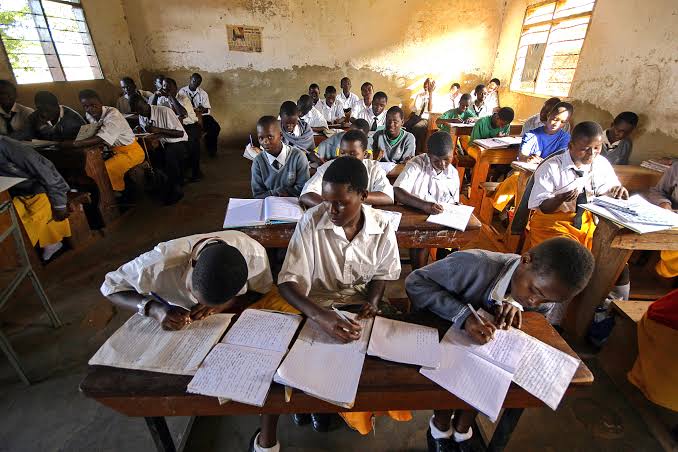
Recently, the India Meteorological Department (IMD) reported that a deep depression formed in the northern part of the Arabian Sea has intensified into a powerful cyclone named Asna. The cyclone is expected to make landfall on the coast of the western Indian state of Gujarat within the next 24 hours. The cyclone, named Asna by Pakistan, is also expected to impact Pakistan’s southeastern Sindh province. This development has set off alarm bells across the region, prompting both India and Pakistan to prepare for the worst.
The Origin and Naming of Cyclone Asna
Cyclone Asna originated as a deep depression in the northern Arabian Sea, an area known for the formation of powerful storms, especially during the monsoon season. The depression gradually gained strength, fueled by the warm waters of the Arabian Sea, and eventually intensified into a cyclone. The naming of the cyclone followed the standard procedure for naming tropical storms in the region, where member countries of the World Meteorological Organization’s Regional Specialized Meteorological Centre (RSMC) propose names from a pre-approved list. Pakistan, as a member of the RSMC, proposed the name Asna, which was accepted and assigned to this storm.
Current Position and Trajectory
As of the latest updates from the IMD, Cyclone Asna is currently positioned approximately 250 kilometers west of Naliya in Gujarat, 160 kilometers from the coast of Karachi in Pakistan, and 350 kilometers from the coast of Pasni in Balochistan. The cyclone is moving at a speed of 14 kilometers per hour and is expected to continue on its trajectory toward the Gujarat coast.
Meteorologists have warned that the cyclone could bring heavy rainfall, strong winds, and storm surges, which could cause widespread damage to infrastructure, agriculture, and homes in the coastal areas. The authorities have issued warnings to fishermen and residents in the coastal regions to evacuate to safer locations and avoid venturing into the sea.
Impact on Gujarat: Heavy Rains and Flooding
The impact of Cyclone Asna is already being felt in several parts of Gujarat. Coastal districts such as Jamnagar, Surat, Porbandar, Morbi, Dwarka, and Kutch have been experiencing heavy rainfall since Wednesday night. The heavy downpours have led to flooding in several areas, disrupting normal life and causing significant inconvenience to residents.
Kutch district has been particularly hard-hit, with the IMD reporting that the district received 882 millimeters of rainfall in the last 24 hours, which is at least 50% more than the average for this time of year. The heavy rainfall has caused rivers and streams to overflow, leading to the inundation of low-lying areas and the displacement of several families.
In Surat and Kutch districts, the situation is equally dire, with heavy rainfall flooding roads, submerging fields, and cutting off access to some villages. The authorities have been working round the clock to evacuate people from vulnerable areas, provide relief materials, and ensure that emergency services are ready to respond to any situation.
Preparations in Gujarat
In anticipation of Cyclone Asna’s landfall, the Gujarat state government has taken extensive measures to prepare for the cyclone and minimize the impact on life and property. The administration has set up emergency shelters in coastal towns and villages, where people from vulnerable areas are being moved. The shelters have been stocked with essential supplies such as food, water, and medicines to ensure that evacuees have access to necessities during their stay.
Hospitals across the coastal districts have been put on high alert, with additional medical staff and supplies being mobilized to handle any emergencies. The police and other law enforcement agencies have been deployed in full force to maintain order and assist with evacuation efforts.
In addition, the National Disaster Response Force (NDRF) has been deployed in several coastal districts to assist with evacuation operations and provide immediate relief in the aftermath of the cyclone. The Indian Navy and Coast Guard are also on standby to carry out rescue operations if needed. Their ships and aircraft are ready to move at a moment’s notice to help those stranded or in danger due to the storm.
Pakistan’s Preparations and Potential Impact
Across the border in Pakistan, the Meteorological Department has issued warnings for Sindh province, particularly the coastal areas around Karachi, Thatta, and Badin. The authorities in Pakistan are closely monitoring the cyclone’s progress and have begun preparing for its impact. The Sindh provincial government has set up emergency response teams and is coordinating with the federal government to ensure that relief operations can be launched quickly if needed.
In Karachi, the largest city in Pakistan and a key economic hub, the administration has set up shelters and evacuation centers to accommodate people from low-lying areas that are at risk of flooding. The city’s drainage system, which has struggled to cope with heavy rains in the past, is being cleared and reinforced to prevent waterlogging and flooding.
The Pakistan Meteorological Department has warned that Cyclone Asna could bring torrential rains and strong winds to the southern parts of Sindh, potentially leading to urban flooding, especially in Karachi. The authorities have urged people living in coastal areas to stay indoors and avoid unnecessary travel during the storm.
Potential Damage and Economic Impact
Cyclone Asna poses a significant threat to both life and property in the regions it is expected to impact. In Gujarat, the agricultural sector could suffer heavily, with crops being destroyed by the heavy rains and strong winds. The fishing industry, a major source of livelihood for many coastal communities, is also at risk, with the rough seas preventing fishermen from going out to sea and potentially damaging fishing boats and equipment.
The industrial sector in Gujarat, particularly in coastal cities like Surat and Jamnagar, could also face disruptions, with flooding and power outages affecting production and supply chains. In Pakistan, similar concerns exist, particularly in Karachi, where the industrial and commercial activities are concentrated. The cyclone could lead to significant economic losses if factories and businesses are forced to shut down or if there is widespread damage to infrastructure.
The response to Cyclone Asna will be critical in determining the extent of the damage and the speed of recovery in the affected areas. Both India and Pakistan have mobilized their disaster response agencies and are taking proactive measures to minimize the impact of the cyclone. However, the effectiveness of these efforts will only become clear in the hours and days following the cyclone’s landfall.
In the aftermath of the cyclone, the focus will shift to recovery and rebuilding. This will involve repairing damaged infrastructure, restoring essential services such as electricity and water supply, and providing financial assistance to those who have lost their homes or livelihoods. Both governments will also need to assess the long-term impact of the cyclone on their economies and take steps to mitigate future risks.
Cyclone Asna is a stark reminder of the power of nature and the vulnerability of coastal communities in the face of such storms. While India and Pakistan have made significant strides in disaster preparedness, the threat posed by such cyclones remains a major challenge. The coming hours will be crucial in determining the extent of the damage caused by Cyclone Asna and the effectiveness of the measures taken to protect lives and property. As the cyclone approaches, the focus remains on ensuring the safety of the people in its path and minimizing the impact on their lives and livelihoods.

 Reporter Name
Reporter Name 






















